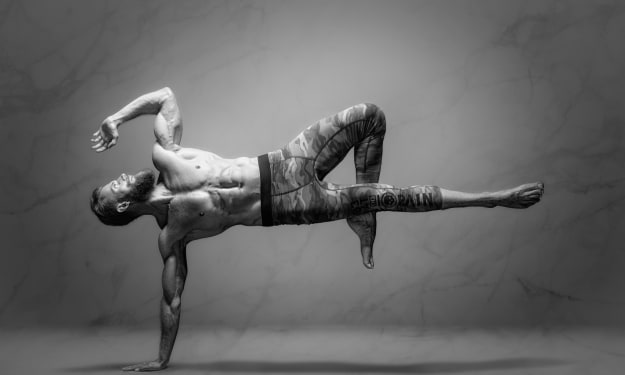
nIn early 1994, my family and I packed up our lives in the United Arab Emirates to move in with my grandmother in Lahore, Pakistan. When Ramadan began a few weeks later, in mid-February, I found that the rituals I had grown up with — the cannon being fired in Sharjah to mark the beginning of the month, being warned not to drink water on the commute to school — were replaced by different traditions: the banging of drummers patrolling the streets each morning to wake people up before the fast, and with family now nearby, interminably long evening meals at relatives’ houses.
On one of the first nights of Ramadan, just before the sun set, the table at my grandmother’s house became laden with plates, bowls, and glasses, then with the staples for iftar, the meal to break the fast: dates, fried kachoris (oval-shaped pastries stuffed with meat and spices), fruit chaat, and pakoras. There was also a hefty bottle of 7-Up next to a jug of milk; the milk was an odd sight because we never drank it with meals. I must have been visibly confused, because my father started explaining that we were going to mix it with the 7-Up.
Until that moment, I had a very clear idea of 7-Up: It was best drunk with crushed ice, and it was offered on a tray to guests; it gushed out of soda dispensers at fast-food restaurants, and sometimes you’d get some for a stomachache. But 7-Up and milk, together, went against the natural order of things.
Fifteen-odd minutes later, sirens blared from the loudspeakers of the neighborhood mosques, signaling the call to sunset prayer and the end of the fast. My father poured 7-Up into the jug of milk, and then distributed the mixture into everyone’s glasses. It looked just like regular milk except for a thin sheet of bubbles that had formed near the brim of the glass, which gradually became a top layer of foam. After eating the date on my plate, I reached out to take a quick gulp, steeling myself for the inevitably weird sensation.

The first sip was, to my surprise, fizzy and refreshing, even soothing. It was lighter than lassi, like a layer of cream had been stripped away and replaced with air, while the smoothness of the milk blunted the cloying sweetness of sugar and the citric clang of lemon-lime. The drink somehow combined the round, smooth simplicity of milk and the sweet crispness of soda.
Even though it was delicious, I still thought that my family was strange for mixing milk and 7-Up (and a few nights later, milk and Pepsi). But I soon learned that this bizarre combination wasn’t unique to our kitchen. In Pakistan’s Punjab province, the combo of milk (doodh) and soda — most commonly, 7-Up or Sprite — is known as doodh soda, and it is synonymous with breaking one’s fast during Ramadan and with summer, both times when ultra-quenching drinks are vital for satisfying a day-long thirst. I wound up drinking doodh soda every day for the rest of that Ramadan.
Doodh soda shouldn’t have seemed so strange to me, though. Sodas are generally popular across Pakistan, and in the days leading up to and throughout Ramadan, beverage makers clog TV broadcasts with ads featuring shiny, happy people gathered around a table, joyously pouring soft drinks. There’s a sense of commercialized piety in Pakistan during Ramadan, so soda companies also frequently advertise philanthropic initiatives to capitalize on the spirit of giving that is a part of Ramadan; this year, Coca-Cola is marketing its partnership with the Edhi Foundation, which provides social services throughout Pakistan. And now, marketers are trying to bring the decades-old tradition of doodh soda into the mainstream. Last year, for instance, Sprite launched a partnership with Olper’s, a popular Pakistani milk brand, to produce a DIY doodh soda kit, while the makers of Pakola, a sickeningly sweet cream soda-like drink with a lurid green color, now sell a flavored milk.
Doodh soda is also offered at dairy shops, which sell snacks and drinks made with fresh milk trucked in from local farms. Depending on the enterprise, a dairy shop can either be a hole-in-the-wall takeaway or a full-fledged cafe that serves a selection of sodas and fried food. On any given day during Ramadan, especially when it falls during the hotter, drier summer months, people can be found crowding around tables or spilling out onto the pavement as they order doodh sodas to guzzle on the spot or to serve at communal iftars.
One such shop is United Dairy, located on a busy street in Karachi’s commercial district, Saddar. It claims to sell over 1,000 liters of doodh soda during Ramadan. "People are hungry and very thirsty, and it quenches the thirst," Mohammad Muqeem, the cashier and manager, told me. "Water can do the job as well but doodh soda has its own taste." He added, “Any soda is harmful, I think, but when it’s mixed in milk it becomes beneficial.” (In the summer of 2016, over a hundred people ended up in a hospital in the city of Faisalabad in Punjab after drinking “unwholesome” doodh soda.)
At dairy shops, doodh soda is a far more elaborate affair than a jug of milk topped off with soda. First, the milk is boiled, as is custom for fresh milk in Pakistan, then it’s chilled and mixed with sugar, much like how doodh soda was made before the advent of mass-produced soda (and somewhat similar to how lassi is made). The milk is combined with ice and the soda of choice — in Karachi, it’s often Pakola, the local specialty — and mixed by rapidly pouring it from one jar to another. “You can’t make it in advance,” Muqeem said. “It’ll spoil, even if you put it in the fridge.” When I suggested using an electric blender instead of hand-pouring the doodh soda, he countered that it would “ruin all the cream.”
“It does take time,” Muqeem said, “but it’s a good product.”
About the Creator
Mark Xavier
typing...






Comments
There are no comments for this story
Be the first to respond and start the conversation.